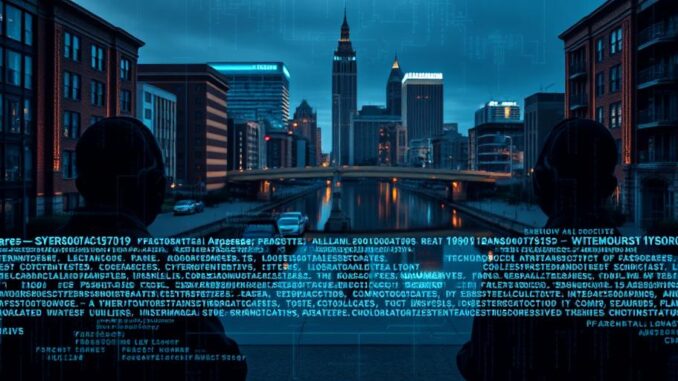
Summary
A ransomware attack on Baltimore City Public Schools in February 2025 compromised data of over 31,000 individuals, including staff, students, and contractors. The attack, attributed to the Cloak ransomware gang, exposed sensitive information like Social Security numbers and student records. The school system is offering credit monitoring services to those affected and has implemented additional cybersecurity measures.
Explore the data solution with built-in protection against ransomware TrueNAS.
** Main Story**
The Cloak ransomware group targeted Baltimore City Public Schools on February 13, 2025, impacting certain IT systems within the network. This attack led to a significant data breach, affecting over 31,000 individuals, including current and former employees, volunteers, contractors, and a small percentage of students. The compromised information potentially includes Social Security numbers, driver’s license numbers, passport numbers, student call logs, absenteeism records, and maternity status.
The Scope of the Breach: Students and Staff Affected
The breach affected approximately 55% of the school system’s current employees, encompassing full-time staff, substitutes, and temporary staff. Furthermore, about 1,150 students, representing less than 1.5% of the student population, also had their data compromised. This incident underscores the increasing vulnerability of educational institutions to cyberattacks and the potential for widespread disruption and compromise of sensitive personal information.
Cloak Ransomware and Past Incidents: A Recurring Threat
While the school district didn’t initially link the attack to a specific ransomware operation, reports indicate the Cloak ransomware gang was responsible. Cloak ransomware emerged in late 2022 and has primarily targeted small to medium-sized businesses. This incident marks another attack on the Baltimore educational system, following a 2020 cyberattack on Baltimore County Public Schools that cost over $10 million in damages. The City of Baltimore also suffered a major ransomware attack in 2019, highlighting the persistent cyber threats faced by public institutions in the area.
Response and Mitigation: Steps Taken by the School System
Following the breach, Baltimore City Public Schools took immediate steps to address the situation and mitigate further harm. They notified law enforcement and launched an investigation with the help of cybersecurity firms. The school system is providing complimentary credit monitoring services to those affected. They also implemented additional cybersecurity enhancements, including installing endpoint detection and response software and resetting all user passwords.
The Importance of Cybersecurity Awareness: Protecting Sensitive Data
This incident emphasizes the importance of strong cybersecurity measures in educational institutions and the need for continuous assessment and improvement of existing security protocols. Schools hold a wealth of sensitive data, making them attractive targets for cybercriminals. It also highlights the growing trend of ransomware attacks against K-12 schools and colleges. Robust preventative measures, incident response plans, and ongoing staff training are crucial for protecting sensitive information and maintaining the integrity of educational systems. As of April 29, 2025, the investigation is complete, and the school system is working to support affected individuals and prevent future incidents. This information is current as of today’s date and may change as more details emerge.


Given the increasing frequency of these attacks, what proactive measures can school systems implement to simulate ransomware scenarios and test the effectiveness of their incident response plans before a real breach occurs?
That’s a great point! Running simulations is crucial. Beyond testing incident response, it also provides valuable data for resource allocation and reveals gaps in employee training. Perhaps regular tabletop exercises and even red team/blue team engagements could be incorporated to strengthen defenses.
Editor: StorageTech.News
Thank you to our Sponsor Esdebe
The scale of affected individuals is alarming. Beyond credit monitoring, are there plans to offer long-term support addressing potential identity theft or misuse of personal data resulting from the breach?
That’s a crucial question! We’re exploring avenues for long-term support. Identity theft can have lasting effects, and we are working to provide resources that extend beyond credit monitoring to help those affected navigate potential future issues stemming from this incident. Further updates will be shared as plans solidify.
Editor: StorageTech.News
Thank you to our Sponsor Esdebe
The repeated targeting of Baltimore educational systems is concerning. What strategies beyond endpoint detection are proving most effective in preventing initial ransomware intrusion in similar school districts? Are there specific training programs or technologies showing demonstrable results?
That’s a critical question about preventative strategies. Beyond endpoint detection, some districts are seeing success with advanced threat intelligence platforms combined with phishing-resistant MFA. Investing in immersive, scenario-based cybersecurity training for all staff is also showing promise in reducing successful intrusions. What other approaches have people found effective?
Editor: StorageTech.News
Thank you to our Sponsor Esdebe
Given the repeated attacks on Baltimore educational systems, how sustainable are credit monitoring services as a long-term solution for affected individuals, considering the potential for misuse of compromised data years into the future?